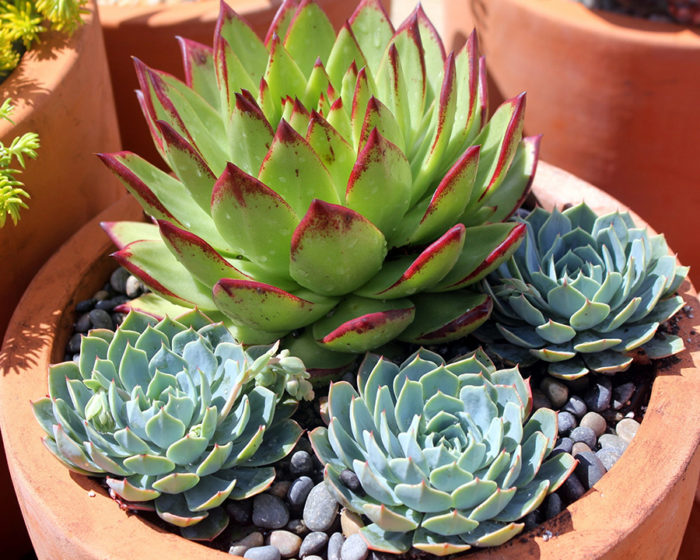
Succulents are remarkable plants that have evolved the ability to store and reserve water within their plump and fleshy leaves and stems. This allows them to remain hydrated during times of water scarcity and to thrive in arid regions that would otherwise be uninhabitable. This adaptation led to the evolution of a diverse group of fascinating, drought-tolerant plants found in a wide range of sizes, colors, textures, and shapes, often with equally stunning blooms. Though succulents are indigenous to a wide range of habitats and can be found all over the world—from the rainforests of Brazil to the rocky soils of Eastern Siberia—most of the varieties available to Northern California gardeners hail from the warm, dry deserts and semi-deserts of South Africa, North and South America, Europe, and Mexico.
Learn more: Cacti and Succulents for Cold Climates
It’s extremely rewarding to incorporate these intriguing plants into your garden’s design. Whether you’re debating the merits of xeriscaping your entire front yard using only succulents, considering incorporating a few ground-cover beauties into your drought-tolerant perennial border, or just beginning to delve into the world of succulents with your first container garden, the following tips will guide you toward success and help your succulents flourish.
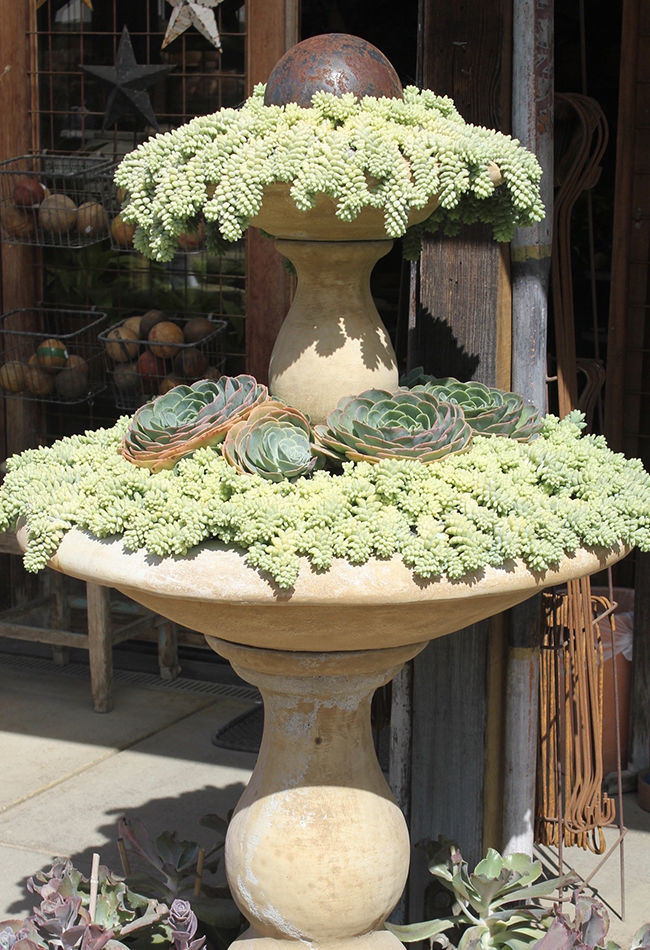
Sun or shade?
Requirements vary, but most succulents prefer sun or part sun. In hotter areas, they fare better if shielded from the hottest afternoon sun, but too much shade can cause some varieties to get leggy and lose color intensity. However, succulents such as ‘Kiwi’ aeonium (Aeonium ‘Kiwi’, Zones 10–11) actually prefer shade. Check with your local nurseries for their recommendations, but more importantly, observe how your succulents react to your own microclimate, and move them if needed.
Succulents can survive extreme drought and will tolerate neglect, but they actually do better with regular irrigation during the summer months; once a week is ideal for most of Northern California. Allow the soil to dry out almost completely before watering again. Container-grown succulents and younger succulents whose roots are not yet fully established may require less water. In winter, water needs drastically diminish. Withhold water, and shelter your container-grown plants from winter rains if necessary.
Excellent drainage is vital
There are many specially formulated, fast-draining cactus and succulent soil mixes available that are ideal for container-grown succulents. I use E. B. Stone Cactus Mix. Mixes like these can also be used for amending your garden’s soil in preparation for planting in the landscape. You can also mix your own using 50% garden or potting soil and 50% gritty material such as vermiculite, coarse perlite, lava rock, or pumice. Periodically check the soil down around the root level of your planted succulents to make sure the drainage remains optimal even in the wettest winter months.
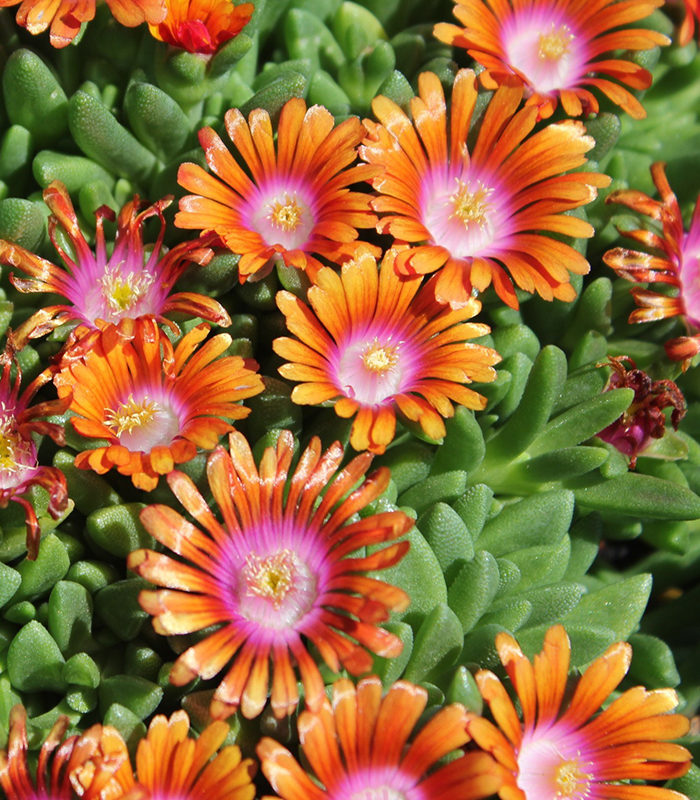
Feed your succulents once or twice during the growing season with half-strength, low-nitrogen liquid fertilizer such as Maxsea Bloom Formula, or low doses of a granular fertilizer such as E. B. Stone Ultra Bloom. Excess nitrogen can burn succulents and cause them to become leafy, leggy pest magnets; it can even cause color loss in some varieties.
Aphids and mealybugs are the most common pests found on succulents. Insecticidal soap is the first line of defense against aphids, with pyrethrin-based or neem-oil insecticides effective for more severe infestations. Mealybugs can be more difficult to manage, but a Q-tip dipped in rubbing alcohol and swabbed across all visible insects will kill them. Fungal problems can occur in high-moisture situations, so avoid overwatering, shelter your succulents from the worst seasonal rainfall (if possible), and ensure excellent air circulation in their growing environment. Thinking about succulents in a terrarium? It may look appealing, but with no air circulation and zero drainage, the charm is fleeting and you’re setting yourself up for disappointment.
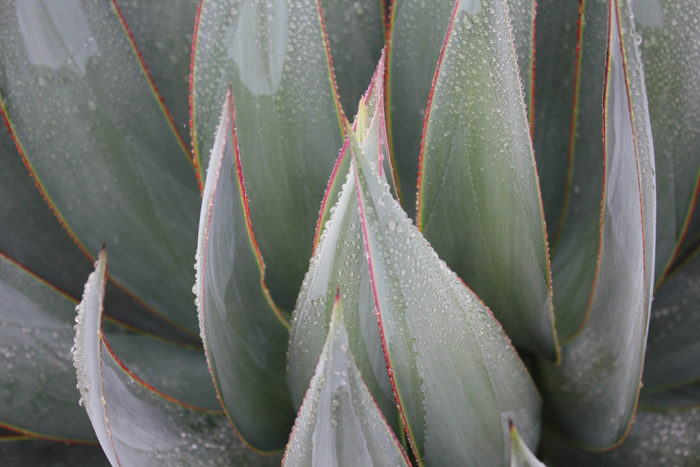
Succulents vary quite a bit in their tolerance for cold temperatures, and knowing the cold tolerance of each plant can be confusing when you’re just starting out. Established plants withstand chilly temperatures better than younger plants. Container-grown succulents are more vulnerable than those planted in the ground. Some—for example, a number of sedum (Sedum spp. and cvs., Zones 3–11) varieties—go completely dormant in winter and need no protection from frost. Others are considered hardy—most sempervivums (Sempervivum spp. and cvs., Zones 4–10) and agaves (Agave spp. and cvs., Zones 5–10) such as ‘Blue Glow’ agave—and can handle temperatures dipping down to 15°F. Quite a few succulents, however, are frost tender, meaning that temperatures lower than 32°F can cause tissue injury and even death. So ask your nursery or do your own research to find out the specific cold tolerances of the plants you buy, and if you have any doubt, be ready to protect your succulents when frost is predicted. Bring your containers indoors, or shelter them under the eaves of your home. Drape insulating frost cloth over your in-ground succulents, building a supportive frame or using simple garden stakes to prevent the protective fabric from touching the plants. Be sure to remove the frost cloth in the daylight hours and after all danger of frost has passed.
Follow the above guidelines, and have fun learning about and growing these unique and wonderful plants. Enjoy your succulent garden!
—Fionuala Campion is the owner and manager of Cottage Gardens of Petaluma in Petaluma, California.
Fine Gardening Recommended Products

Lee Valley Large Gardener's Wash Basket
Fine Gardening receives a commission for items purchased through links on this site, including Amazon Associates and other affiliate advertising programs.

Lee Valley Garden Obelisks
Fine Gardening receives a commission for items purchased through links on this site, including Amazon Associates and other affiliate advertising programs.
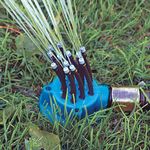
D&X Garden Sprinkler
Fine Gardening receives a commission for items purchased through links on this site, including Amazon Associates and other affiliate advertising programs.
- 12 flexible nozzles that you can set in any direction, simply bend hoses to customize new watering patterns - 360 degree coverage of 3000 sq. ft area
- 3.5 x 4 x 6 inches


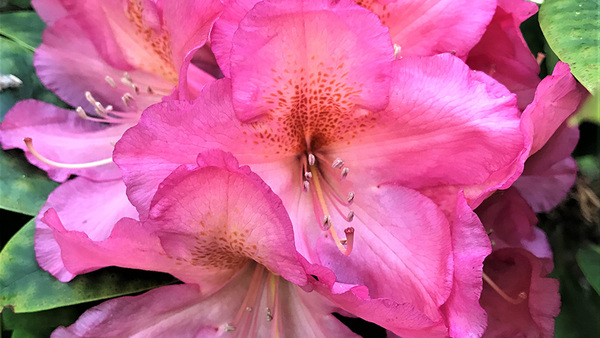
















Comments
Log in or create an account to post a comment.
Sign up Log in